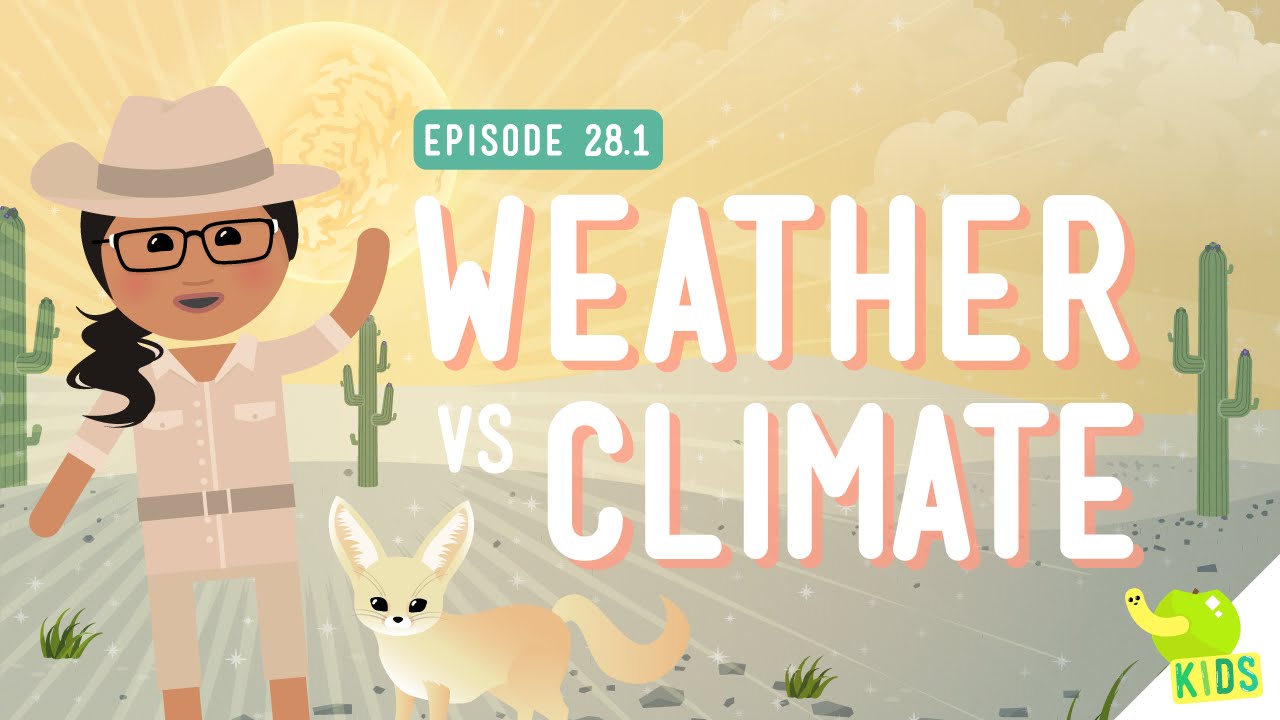
What is Climate and What is Weather? Understanding the Key Differences Explained

Understanding the Basics: What is Climate?
Climate refers to the long-term patterns and averages of weather conditions in a specific area over an extended period, typically 30 years or more. Unlike weather, which can change from minute to minute, climate provides a broader view of what conditions can be expected in a region throughout different seasons and years. It encompasses various elements, including temperature, humidity, precipitation, wind patterns, and atmospheric pressure.
To understand climate better, its important to recognize its key components:
- Temperature: The average heat or cold measured over time, influenced by geographic location, elevation, and proximity to oceans.
- Precipitation: The amount of rainfall or snowfall in a region, which affects water availability and ecosystems.
- Humidity: The level of moisture in the air, impacting comfort levels and weather patterns.
- Wind Patterns: The movement of air masses that can influence temperature and precipitation distributions.
Climate can be categorized into different types, often referred to as climate zones. These zones include tropical, arid, temperate, continental, and polar climates, each characterized by unique temperature ranges, precipitation levels, and seasonal variations. For example, tropical climates typically feature high temperatures and significant rainfall year-round, while arid climates are marked by low precipitation and high evaporation rates.
Understanding climate is crucial for various reasons, including agriculture, urban planning, and environmental conservation. By studying climate patterns, scientists and policymakers can better predict changes, prepare for extreme weather events, and implement strategies to mitigate the impacts of climate change on ecosystems and human activities.
What is Weather? Key Differences from Climate
Weather refers to the short-term atmospheric conditions in a specific place at a specific time. It encompasses various phenomena such as temperature, humidity, precipitation, wind speed, and visibility. These elements can change rapidly, sometimes even within minutes or hours, making weather a dynamic aspect of our daily lives. For instance, a sunny morning can quickly turn into a thunderstorm by the afternoon, showcasing the unpredictable nature of weather.
In contrast, climate describes the long-term average of weather patterns in a particular region over an extended period, typically 30 years or more. While weather can fluctuate dramatically from day to day, climate provides a broader context, offering insights into what one can generally expect in terms of seasonal changes and trends. For example, a region may experience warm summers and cold winters, defining its climate, even if daily weather conditions vary significantly.
To better understand the differences between weather and climate, consider the following key points:
- Time Frame: Weather is short-term; climate is long-term.
- Variability: Weather can change rapidly; climate changes more slowly.
- Measurement: Weather is measured with instruments like thermometers and barometers; climate is assessed through long-term data collection and analysis.
- Impact: Weather affects daily activities; climate influences agricultural practices and ecosystem health.
Understanding these distinctions is crucial for grasping how atmospheric conditions affect our environment and daily lives. While weather forecasts can help us plan our day-to-day activities, knowledge of climate is essential for addressing broader issues such as climate change and its implications for future generations.
The Relationship Between Climate and Weather: A Comprehensive Overview
Understanding the distinction between climate and weather is crucial for grasping how our environment operates. While often used interchangeably, these two concepts represent different phenomena. Weather refers to the short-term atmospheric conditions in a specific place at a specific time. This includes factors such as temperature, humidity, precipitation, and wind speed. In contrast, climate is the long-term average of these weather conditions over an extended period, typically 30 years or more, for a particular region.
Key Differences Between Climate and Weather:
- Time Frame: Weather is immediate and transient, while climate is stable and long-term.
- Scope: Weather can vary dramatically within a single day, whereas climate reflects broader trends.
- Measurement: Weather is measured in real-time using instruments like thermometers and barometers, while climate is assessed through statistical data and historical records.
The relationship between climate and weather is inherently interconnected. Changes in climate can significantly influence weather patterns. For instance, a warming climate can lead to more extreme weather events, such as increased rainfall or prolonged droughts. This interaction highlights the importance of climate science in predicting future weather conditions and preparing for potential impacts on ecosystems and human activities.
Furthermore, understanding this relationship is vital for various sectors, including agriculture, urban planning, and disaster management. By analyzing long-term climate data, scientists can better anticipate weather-related challenges and develop strategies to mitigate their effects. This knowledge is essential for fostering resilience in communities facing the realities of climate change and its associated weather phenomena.
How Climate Affects Weather Patterns Around the World
Climate plays a crucial role in shaping weather patterns across the globe, influencing everything from temperature variations to precipitation levels. The long-term averages of temperature and humidity in different regions create distinct climate zones, which in turn dictate the types of weather events that can be expected throughout the year. For example, tropical climates typically experience warm temperatures and high humidity, leading to frequent rain showers and storms, while polar climates are characterized by cold temperatures and dry conditions.
Key Factors Influencing Weather Patterns
Several key factors illustrate how climate impacts weather patterns:
- Latitude: Regions closer to the equator generally experience warmer temperatures, while those near the poles are cooler.
- Altitude: Higher elevations can lead to cooler temperatures and different precipitation patterns compared to lower areas.
- Ocean Currents: Warm and cold ocean currents affect the climate of coastal regions, influencing rainfall and temperature.
- Topography: Mountains can block air masses, creating rain shadows that result in dry conditions on one side and wet conditions on the other.
Additionally, climate change has introduced variability in traditional weather patterns, causing unexpected phenomena such as prolonged droughts in previously fertile areas or increased frequency and intensity of hurricanes and typhoons. The warming of the planet is leading to shifts in jet streams and ocean temperatures, which can result in altered precipitation patterns and more extreme weather events. This unpredictability is particularly concerning for agriculture, water supply, and disaster preparedness in affected regions.
Furthermore, the interaction between climate and weather is complex and multifaceted. For instance, regions that experience seasonal monsoons rely on predictable climate patterns to sustain their agriculture. Changes in these patterns due to climate shifts can have devastating effects on food security and local economies. Understanding the intricate relationship between climate and weather is essential for developing effective strategies to mitigate the impacts of climate change and adapt to its consequences.
Why Understanding Climate and Weather is Crucial for Our Future
Understanding the distinction between climate and weather is essential for making informed decisions that affect our environment and society. Weather refers to short-term atmospheric conditions, such as temperature, humidity, and precipitation, that can change from hour to hour. In contrast, climate encompasses long-term patterns and averages of weather in a particular region over extended periods, typically 30 years or more. This distinction is crucial as it helps us grasp the broader implications of changing weather patterns on global climate systems.
Recognizing the effects of climate change is imperative for several reasons. First, it allows us to anticipate and mitigate the impacts of extreme weather events, such as hurricanes, floods, and droughts. Understanding these patterns helps communities prepare better and develop effective disaster response strategies. Additionally, as global temperatures rise, the implications for agriculture, water supply, and biodiversity become increasingly severe. By grasping climate trends, we can adapt our agricultural practices to ensure food security and protect vulnerable ecosystems.
Moreover, understanding climate and weather informs policy-making and drives sustainable practices. Governments and organizations rely on accurate climate data to craft regulations aimed at reducing greenhouse gas emissions and promoting renewable energy sources. The integration of climate science into economic planning can lead to investments in infrastructure that are resilient to climate impacts, ultimately safeguarding communities from future crises.
Finally, education and awareness about climate and weather empower individuals to make environmentally conscious choices. By understanding how their actions contribute to climate change, people can adopt more sustainable practices in their daily lives, such as reducing waste, conserving energy, and supporting eco-friendly products. This collective effort is vital in fostering a culture of sustainability and resilience, ensuring a healthier planet for future generations.
Did you find this article helpful? What is Climate and What is Weather? Understanding the Key Differences Explained See more here General.
Leave a Reply





Related posts